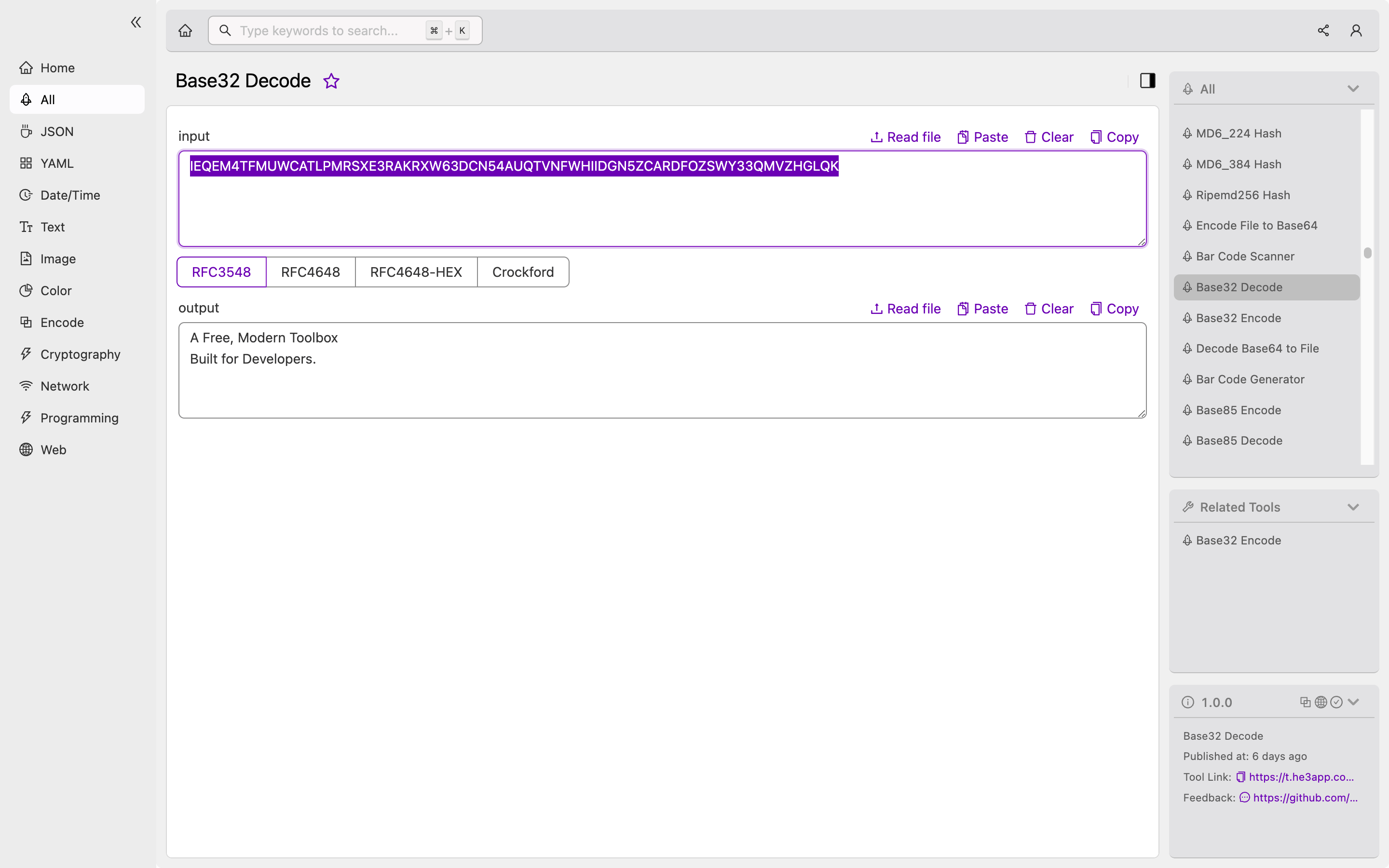Demystifying Base32 Decode for Developers
As a developer, you may be working with encoded data for various purposes, including security. Base32 decode is a powerful tool that allows you to decode encoded data back to its original format. In this article, we will explore the concept behind base32 decode, its functionality, and how you can use it to improve security in your applications.
What is Base32 Decode?
Base32 decode is a method for converting encoded data back to its original format. It is a binary-to-text encoding scheme that represents binary data in a string format using 32 symbols, including numbers and letters. It is often used for data transmission, storage, and security purposes.
Base32 decode works by taking an encoded string and converting it back to its original binary format. It uses a specific algorithm that maps each character in the encoded string to its corresponding 5-bit binary value. This binary value is then used to reconstruct the original binary data.
How Base32 Decode Works
The following code snippet demonstrates how to use Python to decode an encoded string using the base32 decode function:
import base64
encoded_string = "MZXW6YTBOI======"
decoded_string = base64.b32decode(encoded_string)
print(decoded_string)The output of this code is the decoded binary data represented as a string. The base32 decode function uses the base64 Python module to perform the decoding operation.
Scenarios for Using Base32 Decode
As a developer, you can use base32 decode in various scenarios, including:
- Decoding data received from a third-party service
- Decoding encoded data stored in a database
- Decoding encoded data to improve security
Key Features of Base32 Decode
The key features of base32 decode include:
| Feature | Description |
|---|---|
| Binary-to-text encoding | Converts binary data to a string format |
| 32 symbols | Uses 32 symbols to represent binary data |
| Algorithmic mapping | Uses a specific algorithm to map each character to its corresponding binary value |
| Reconstructs binary data | Reconstructs binary data from an encoded string |
Misconceptions and FAQs
Misconception 1: Base32 Decode is the Same as Base64 Decode
Base32 decode and base64 decode are similar, but they are not the same. Base64 decode uses a larger character set (64 symbols) to represent binary data, while base32 decode uses a smaller character set (32 symbols).
Misconception 2: Base32 Decode is Secure
While base32 decode can improve security by obfuscating data, it is not a foolproof security measure. It is important to use additional security measures, such as encryption, to ensure data is secure.
FAQ 1: Can Base32 Decoded Strings be Encoded Again?
Yes, base32 decoded strings can be encoded again using the base32 encode function.
FAQ 2: Can Base32 Decode be Used for Large Data Sets?
Base32 decode can be used for large data sets, but it may not be the most efficient method for decoding large amounts of data. Other methods, such as base64 decode, may be more suitable for large data sets.
Or you can use base32 Decode tool in He3 Toolbox (https://t.he3app.com?i4mp ) easily.

Conclusion
Base32 decode is a powerful tool for converting encoded data back to its original binary format. It is a useful tool for developers working with encoded data, especially for security purposes. By understanding how base32 decode works, its key features and related misconceptions, and FAQs, you can leverage this functionality to improve the security of your applications.
